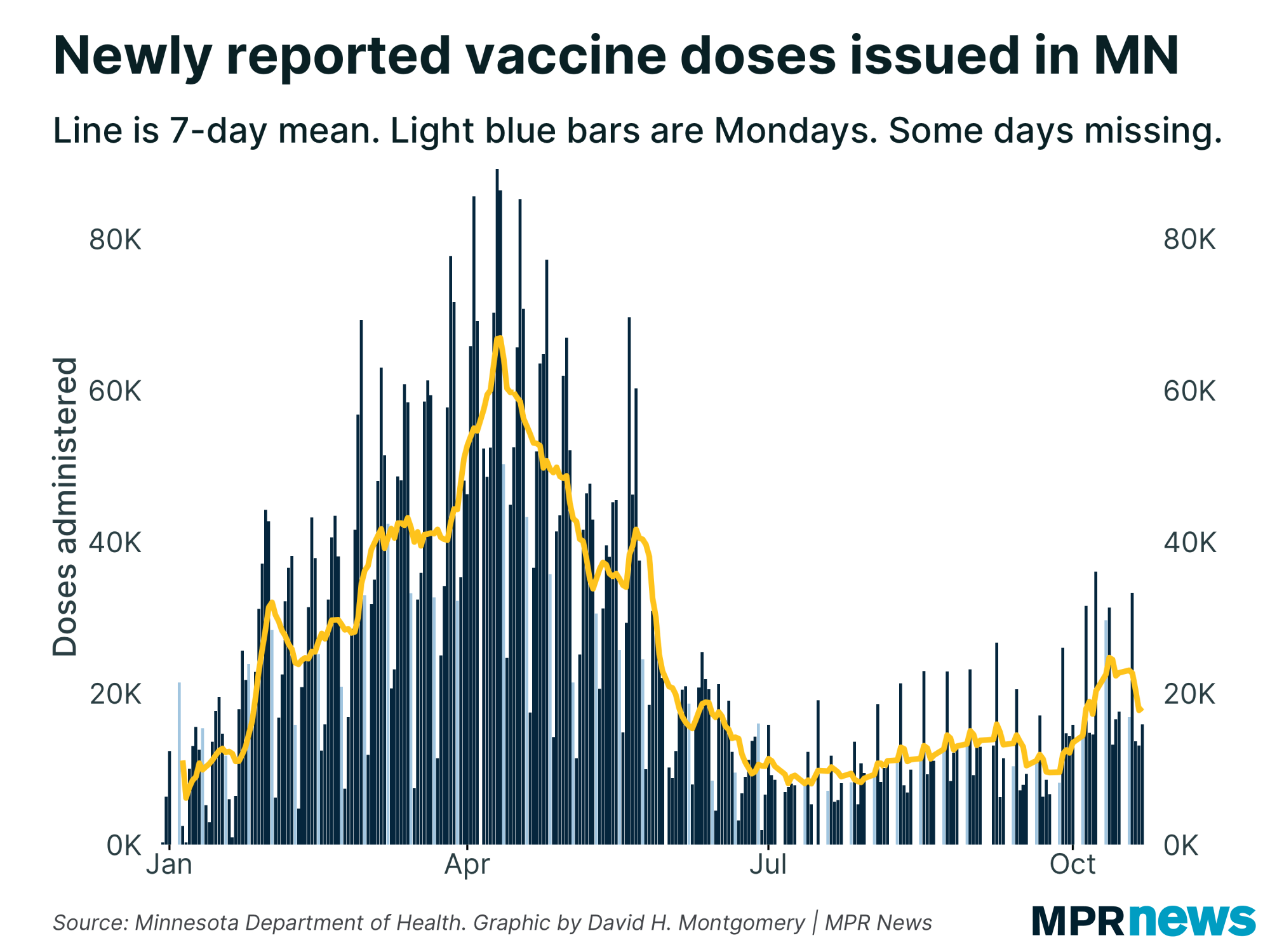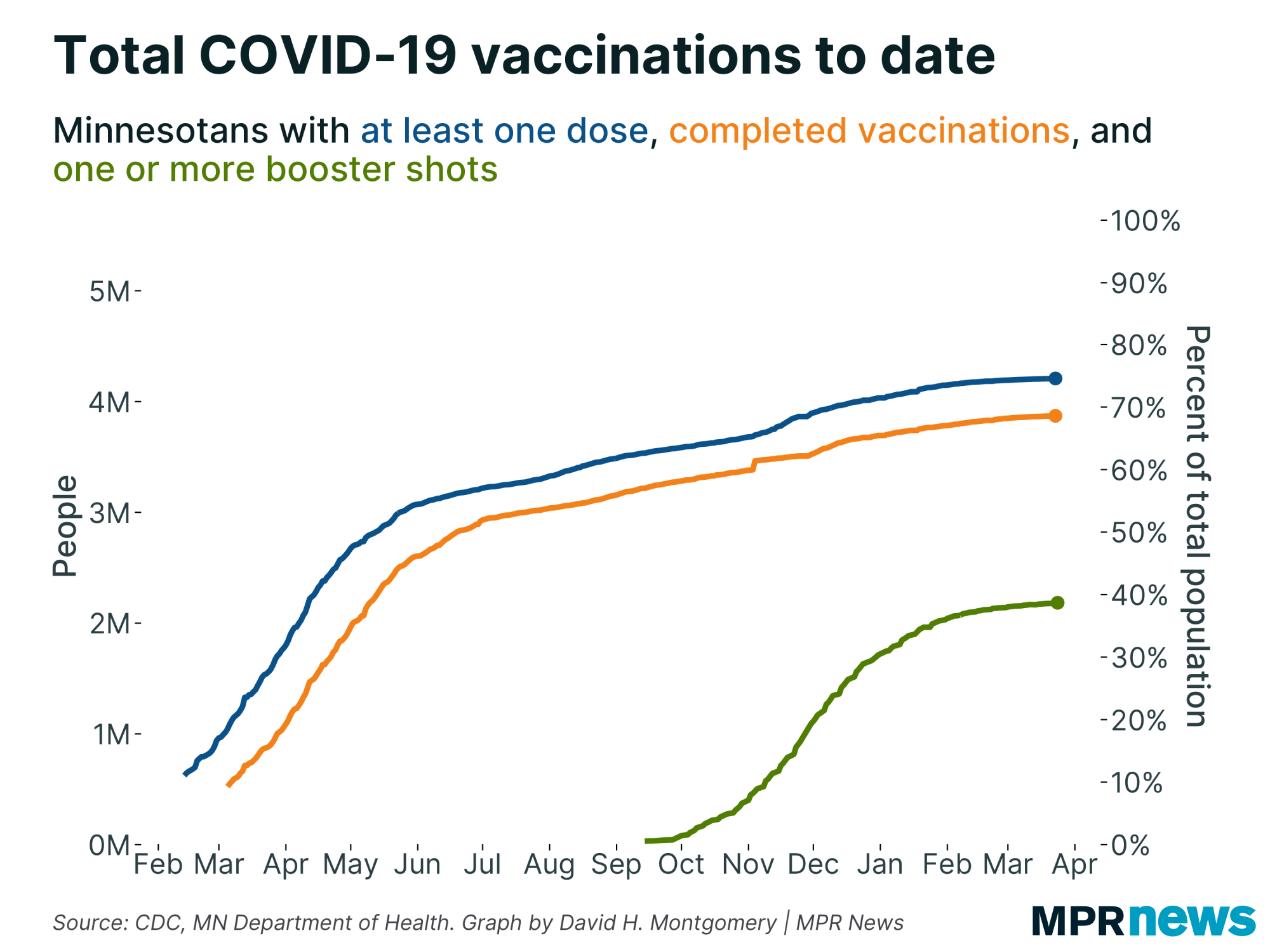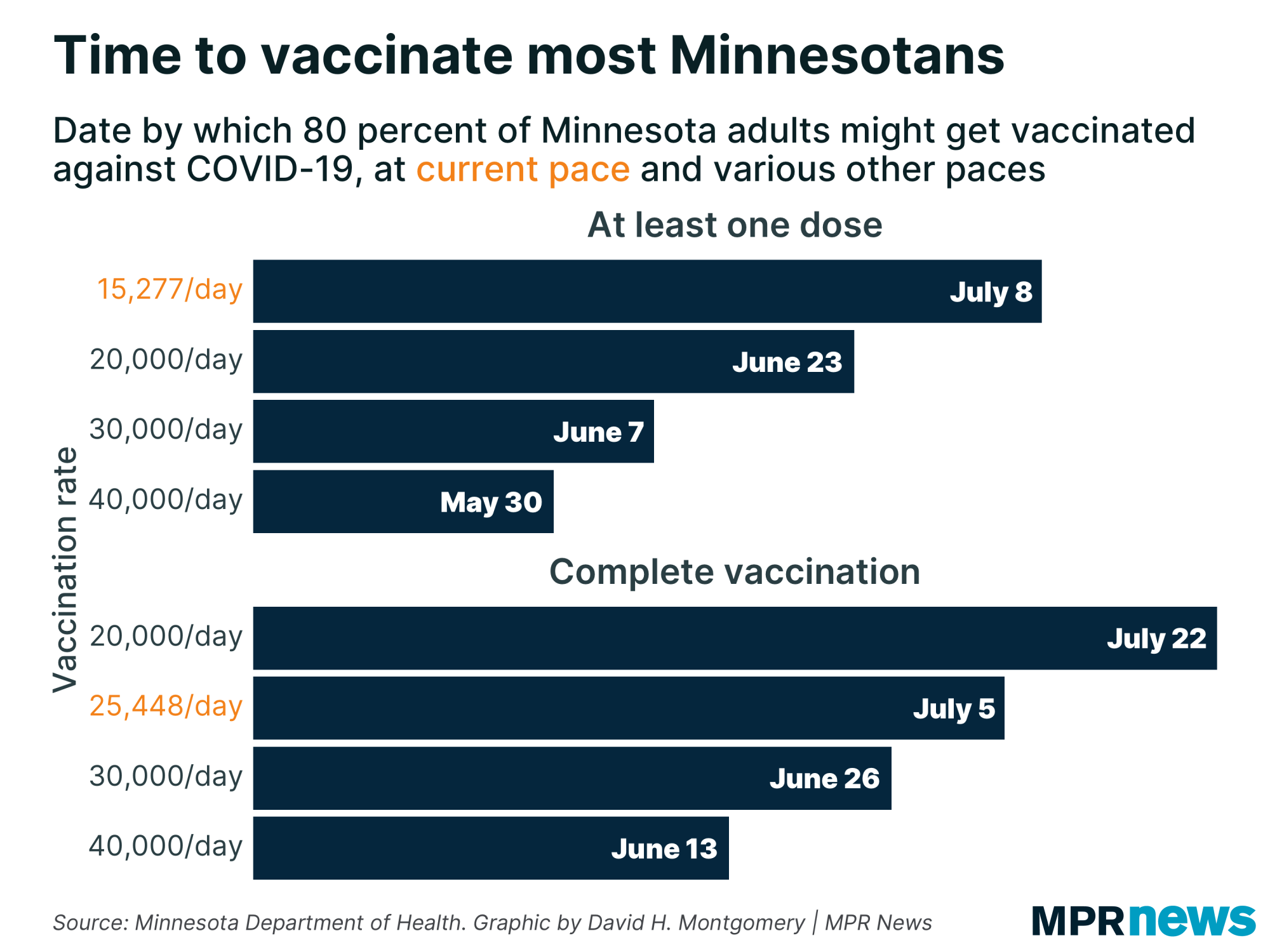March 12 update on COVID-19 in MN: Vaccinations up; U campuses to reopen fully in fall

Go Deeper.
Create an account or log in to save stories.
Like this?
Thanks for liking this story! We have added it to a list of your favorite stories.
3 things to know:
Walz unveils a major pullback on the state’s remaining daily life restrictions
21 percent of Minnesotans with at least 1 dose; 12 percent completely vaccinated
U plans to reopen campuses fully in the fall
Updated 12:35 p.m.
Minnesota’s COVID-19 vaccination pace is rising, and state officials remain confident they’re on a path to offering a shot to every Minnesota adult starting in late April.
While there’s been an uptick recently in known, active COVID-19 cases, conditions are improving to the point where Gov. Tim Walz on Friday unveiled a major pullback on Minnesota’s remaining COVID-19 restrictions, expanding gatherings in bars and restaurants, sports and other larger gatherings.
The University of Minnesota on Friday morning also announced that all of its campuses are planning to return to fully on-campus operations this fall. The U Twin Cities is the region’s largest college campus, so it’s likely other schools may follow its lead.
Turn Up Your Support
MPR News helps you turn down the noise and build shared understanding. Turn up your support for this public resource and keep trusted journalism accessible to all.
Inoculation progress
The Health Department on Friday reported more than 48,000 new vaccinations. The seven-day trend is running at more than 42,400 shots daily, the highest since vaccinations began in late December.

Agency data shows more than 660,000 people — 12 percent of the state’s population — have completed their vaccinations, while more than 1.1 million — about 21 percent — had received at least one dose, including more than 71 percent of people age 65 and older.

Because doses are shipped once a week, the state often sees its vaccination counts jump from Thursday through Sunday.
Officials continue to urge Minnesotans to stay vigilant against the disease, wearing masks in public gathering spaces and socially distancing. Concern continues to bubble around an ongoing outbreak of COVID-19 in Carver County that includes the worrisome U.K. strain.

State public health leaders have described their push to vaccinate Minnesotans as a race against another possible surge in the disease. Walz on Friday said he hoped another 700,000 Minnesotans could get a vaccine dose by April 1.
Pandemic metrics mostly stable; active cases up
Minnesota’s COVID-19 numbers show disease conditions continue to stay mostly stable, but there was a noticeable rise in the number of known, active cases. That count came in at 8,338 on Friday, the highest it's been in more than a month.
While the overall trend remains flat and current counts are still very low compared to late November and early December, the increase is notable given the concerns about the rise of the U.K. COVID-19 strain in Minnesota.

Hospitalization rates remain at levels last seen before the late-fall surge in cases: 240 people are hospitalized with the disease as of Thursday with 66 needing intensive care.
Thirteen newly reported deaths brought Minnesota’s collective pandemic death toll to 6,737. Among those who’ve died, about 63 percent had been living in long-term care or assisted living facilities; most had underlying health problems.

The state has recorded 495,208 total confirmed or probable cases so far in the pandemic, including 1,107 posted Friday. About 97 percent of Minnesotans known to be infected with COVID-19 in the pandemic have recovered to the point where they no longer need to be isolated.
Cases spread across age groups, regions
People in their 20s still make up the age bracket with the state’s largest number of confirmed cases — nearly 93,000 since the pandemic began, including nearly 49,000 among those ages 20 to 24.

The number of high school-age youth confirmed with the disease has also grown, with nearly 39,000 total cases among those ages 15 to 19 since the pandemic began.
With kids increasingly returning to school buildings and sports, Minnesota public health officials are urging Minnesota families with children to get tested every two weeks for COVID-19 now until the end of the school year.
Although young people are less likely to feel the worst effects of the disease and end up hospitalized, experts worry youth will spread it unknowingly to older relatives and members of other vulnerable populations.
People can have the coronavirus and spread COVID-19 when they don’t have symptoms.
Regionally, most parts of Minnesota are down significantly from the late November and early December spike, as well as a January uptick.

Caseloads still heaviest among people of color
In Minnesota and across the country, COVID-19 has hit communities of color disproportionately hard in both cases and deaths. That’s been especially true for Minnesotans of Hispanic descent for much of the pandemic.

Even as new case counts continue to track well below their late November, early December peaks, the data shows Latino people continue to be hit hard.
Distrust of the government, together with deeply rooted health and economic disparities, have hampered efforts to boost testing among communities of color, officials say, especially among unauthorized immigrants who fear their personal information may be used to deport them.
Walz has acknowledged that distrust by communities of color has been a problem during the pandemic. Officials last week offered up some data on vaccinations broken down by race and ethnicity. The state is expected to update the data weekly.
Minnesota Health Commissioner Jan Malcolm said the state was committed to doing more to expand vaccine access to people of color, including getting more doses to community pharmacies, partnering with local groups and deploying mobile vaccination clinics.
Walz unveils easing of COVID-19 restrictions:
Walz answers reporter questions:
COVID-19 in Minnesota
Data in these graphs are based on the Minnesota Department of Health's cumulative totals released at 11 a.m. daily. You can find more detailed statistics on COVID-19 at the Health Department website.
Top headlines
Walz OKs larger gatherings, fans at Twins games: The governor’s latest pullback will allow people to gather in larger groups indoors and outdoors, while bars and restaurants will be able to serve at 75 percent capacity.
President Biden calls for all American adults to be eligible for vaccines by May 1: President Joe Biden is aiming for the country to begin to find a degree of normalcy and begin to move on from the coronavirus pandemic by the July 4th holiday, Biden announced in his first prime-time address Thursday night from the White House on the one-year anniversary of the pandemic.
Visitation rules easing in Minnesota's long-term care facilities: That’s after the Centers for Disease Control and Prevention and Centers for Medicare and Medicaid released new guidance this week that allows for residents to receive visitors more widely than has been possible during most of the pandemic.
A glimpse into a year of virtual high school in MN: In a year upended by the coronavirus pandemic, the roller coaster of open and closed school buildings and experiments with learning scenarios means that it’s hard to pinpoint exactly what high school has been like for any given student on any given day.
Dear reader,
Political debates with family or friends can get heated. But what if there was a way to handle them better?
You can learn how to have civil political conversations with our new e-book!
Download our free e-book, Talking Sense: Have Hard Political Conversations, Better, and learn how to talk without the tension.



